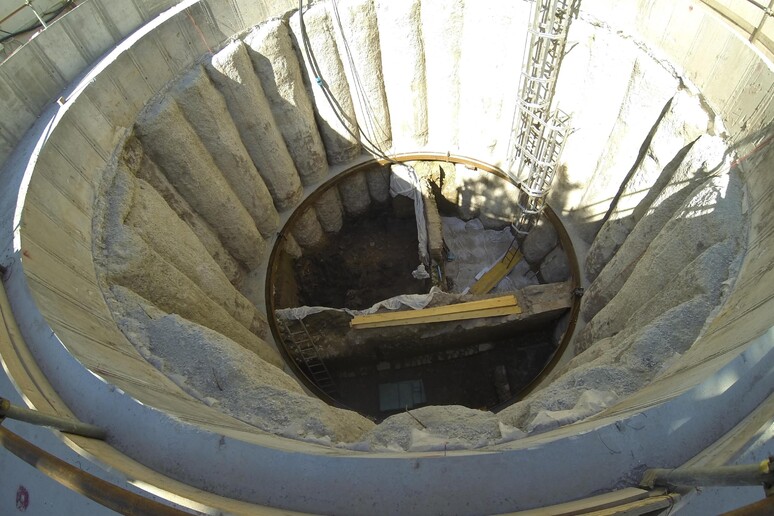Work on a new Roma subway station
has uncovered an ancient Roman 'Commander's House', the first
discovery of its kind in the Italian capital, archaeologists
said Friday.
The dig on the Metro C line has turned up a domus connected
to the dormitory of a barracks built at the time of Emperor
Trajan and then modified by Hadrian.
The dormitory and barracks were discovered at the Amba Aradam
stop work site in 2016.
"It is an exceptional discovery because a barracks has never
been identified before in Rome, nor a domus connected to the
barracks," said Rome's archaeological superintendent, Rossella
Rea.
The domus of the commander was found about 12 metres under
the level of the Amba Aradam station, near the Basilica of San
Giovanni Laterano (St John Lateran).
The house will now be dismantled, level by level, and
temporarily moved to another site before being placed back at
its original site, sources said.
Heated containers will be used to keep it pristine during the
move, while work will then resume at the Amba Aaradam metro
stop.
Rome Archaeological Heritage Superintendent Francesco
Prosperetti said he had already been in touch with national
anti-corruption body ANAC chief Raffaele Cantone to help
preserve the integrity of the find.
"He assured me that the place will be made accessible to the
public and the whole find will be put back in its place," said
Prosperetti.
"Exactly how this will happen, compatibly with the metro C
line, we'll have to see".
Prosperetti said he had "already secured planning and
funding" for the project.
ANAC and Cantone has to sign off on all major public works in
Italy.
The area at and around the Amba Aradam station has already
yield a rich archaeological trover.
Last June excavations conducted as part of work for the new C
line of the Rome metro uncovered Pompeii-like finds including a
dog's skeleton.
The dig has unearthed two spaces dating to the middle of the
imperial period which, due to a fire, feature well-conserved
parts of a wooden ceiling and furniture.
"The material is only conserved in exceptional environmental
and climatic conditions, or after special events like those that
took place at Herculaneum and Pompeii," said sources at Rome's
special superintendency.
"The discovery of a burned wooden ceiling is unique for the
city".
The excavation in via dell'Amba Aradam also found the
skeleton of the dog, curled up in front of a door and "likely
trapped inside the building at the time of the fire," sources
said.
The remains of a smaller animal, which have yet to be
identified, were also uncovered.
A fine black and white mosaic floor was also found.
"What makes this find resemble Pompeii is that we have
evidence of a moment in history," said Prosperetti at the time.
"The fire that stopped life in this environment allows us to
imagine life at a precise moment".
The ongoing excavation is taking place on the southern
slopes of the Coelian Hill, one of Rome's seven hills, which in
imperial times was home to luxury aristocratic residences and,
further to the south, a series of military buildings, including
a barracks recently found in Via Ipponio.
The stretch of metro from Amba Aradam to the Imperial Fora is
scheduled to be unveiled in 2021.
ALL RIGHTS RESERVED © Copyright ANSA











